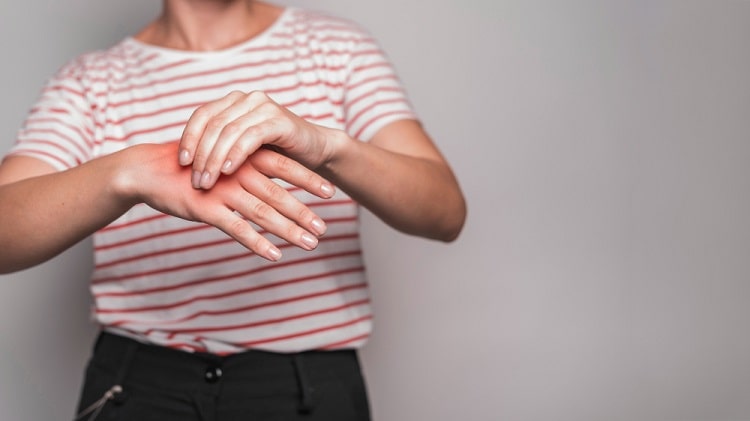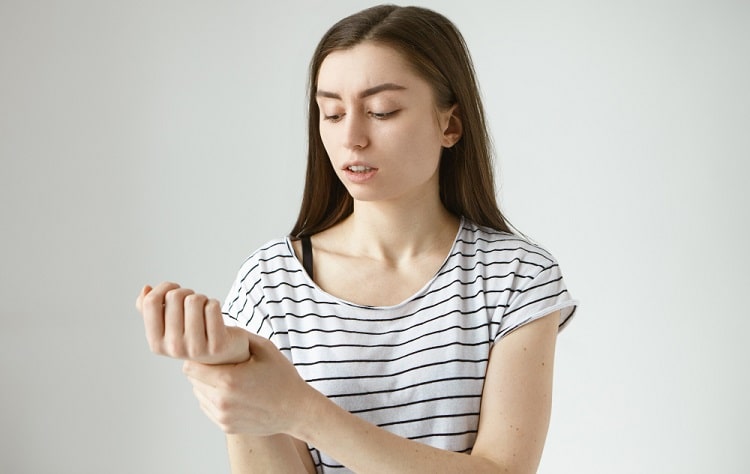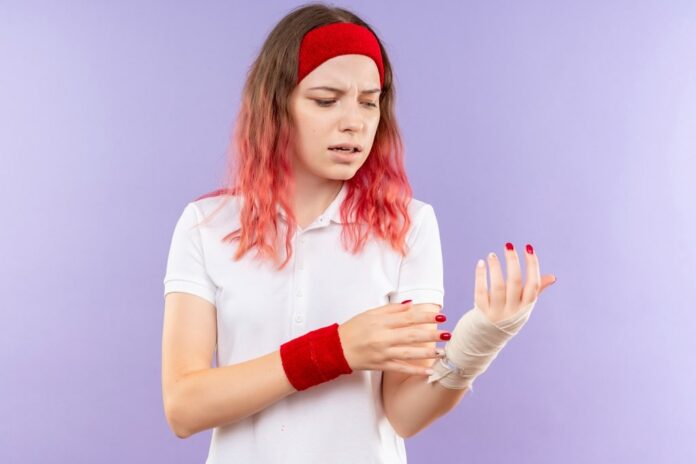Empower yourself with knowledge of the causes, treatment, and care for blisters on the hands or feet in children. A comprehensive guide for parents and caregivers.
Blisters on the hands or feet can be common in children, causing discomfort and concern for parents.
Understanding the causes, appropriate treatment options, and proper care techniques is essential for effectively managing these blisters and promoting your child’s healing process.
In this blog, we will provide valuable insights into the causes of blisters on the hands or feet in children, explore effective treatment methods, and offer practical tips for providing care and preventing further complications.
Blisters on Hand or Foot in Children
Get expert insights on the causes, treatment, and care of blisters on hand or foot in children. Your go-to comprehensive guide for parents.

#1. Causes of Blisters on Hand or Foot:
Children may develop blisters on their hands or feet due to various reasons. This section will discuss common causes such as friction from ill-fitting shoes, excessive moisture, burns, insect bites, allergies, and viral or bacterial infections.
By identifying the specific cause, you can take appropriate measures to address the underlying issue and prevent future occurrences.
#2. Treatment Options for Blisters on Hand or Foot:
When treating blisters in children, gentle and effective approaches are necessary.
This section will cover different treatment options, including proper wound cleansing, application of topical ointments or creams, using sterile bandages, and providing pain relief as needed.
We will also emphasize the importance of avoiding the urge to pop or drain the blisters, which can lead to infections and delayed healing.
#3. Care and Management Techniques:
Proper care is vital to ensure optimal healing and prevent complications. This section will provide practical tips for caring for blisters on your child’s hands or feet.
Topics will include maintaining cleanliness, promoting air circulation, avoiding irritants, and implementing suitable footwear and clothing choices. Additionally, we will address the importance of monitoring the blisters for signs of infection and seeking medical attention if necessary.
#4. Pain Management and Comfort Measures:
Blisters can be painful, especially for children. This section will offer guidance on managing pain and discomfort associated with hand or foot blisters.
We will discuss the appropriate use of pain relievers, soothing remedies like cool compresses, and alternative methods such as elevating the affected limb or using protective padding.
By implementing these measures, you can help alleviate your child’s discomfort and aid in their recovery.
#5. Preventing Blisters in Children:
Prevention is key in minimizing the occurrence of blisters. This section will provide practical preventive measures for parents to implement. Topics will include:
- Choosing proper footwear.
- Promoting good hygiene practices.
- Encouraging breaks during repetitive activities.
- Maintaining skin health through moisturizing and sun protection.
These preventive steps can significantly reduce the chances of your child developing hand or foot blisters.
Blisters: Causes, Treatment, Prevention
Blisters are a common skin condition that can be uncomfortable and painful. Whether caused by friction, burns, or medical conditions, understanding the causes, treatment options, and prevention techniques can help alleviate discomfort and promote healing.

This blog will provide the following:
- A comprehensive guide on blisters.
- Exploring their various causes.
- Effective treatment methods.
- Practical prevention tips.
By equipping yourself with this knowledge, you’ll be better prepared to manage blisters and minimize their impact on your daily life.
#1. Understanding the Causes of Blisters:
To effectively treat and prevent blisters, it is important to understand their underlying causes. This section will discuss common triggers such as friction, burns, insect bites, allergic reactions, and certain medical conditions. By identifying the root cause of your blisters, you can implement targeted strategies for prevention and management.
#2. Effective Treatment Options:
When faced with blisters, knowing how to treat them properly can expedite healing and provide relief. This section will cover various treatment methods, including proper blister care, wound cleansing, bandaging techniques, and over-the-counter remedies. Additionally, we will explore when it is necessary to seek medical attention for severe or infected blisters.
#3. Prevention Techniques:
Prevention is key when it comes to blisters. This section will provide practical tips and strategies to reduce the risk of developing blisters in different scenarios.
We will discuss the importance of wearing well-fitting shoes, utilizing protective measures during physical activities, implementing proper hand and foot hygiene, and using appropriate skincare products.
By adopting these preventive measures, you can significantly minimize the occurrence of blisters.
#4. Special Considerations and High-Risk Groups:
Certain individuals, such as athletes, hikers, and people with specific medical conditions, may be more prone to blisters. This section will address high-risk groups’ unique challenges and provide tailored advice to mitigate blister formation.
We will also discuss specific considerations for individuals with diabetes or compromised immune systems to ensure safe and effective blister management.
#5. Beyond Blisters: Maintaining Healthy Skin:
While this blog focuses on blisters, it is important to recognize the broader importance of maintaining overall skin health.
This section will provide tips and suggestions for maintaining healthy, resilient skin to minimize the occurrence of blisters and other skin conditions. Hydration, nutrition, and protective clothing will be explored to promote optimal skin wellness.
Conclusion:
Blisters can be bothersome, but their impact on your daily life can be minimized with the right knowledge and strategies. You can effectively manage blisters and promote healing by understanding the causes, implementing effective treatment methods, and adopting preventive measures.
Remember, maintaining healthy skin is a vital aspect of overall well-being. By incorporating these practices into your routine, you can enjoy healthier, more resilient skin and reduce the likelihood of future blister formation.
Blisters on the hands or feet can be common in children, but with the right knowledge and care, they can be effectively managed and minimized. By understanding the causes, implementing appropriate treatment methods, providing proper care, and taking preventive measures, parents can support their child’s healing process and reduce the discomfort associated with blisters.
Remember to consult a healthcare professional if the blisters worsen, show signs of infection, or if you have any concerns. With your attentive care, your child will be on their way to a speedy recovery and continued comfort.
Read More:
- How To Get Rid of Scabies Naturally
- Are You looking for an Acne Scar Treatment?
- How To Remove Dead Skin from Your Face?








